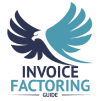
Businesses that haven’t leveraged invoice factoring often have many questions about determining if it’s right for their needs. In reality, you probably already have most of the information you need to make the call on your cash flow sheet. On this page, we’ll walk you through the mechanics of this, common cash flow issues factoring solves, and signals uncovered through cash flow analysis that indicate factoring may be ideal.
Understanding the Basics of Cash Flow Analysis
Cash flow refers to the net cash and cash equivalents moving in and out of your business. Money moving in is referred to as “cash inflows,” and money moving out is referred to as “cash outflows.”
If you have more money moving in than out, it’s said that you have positive cash flow. If your outflows are higher, you have negative cash flow.
Cash Flow Explained
Cash flow is an indicator of a business’s financial health. However, assessing it is not as simple as determining that businesses with strong and positive cash flow are performing well. Nor is it true that all businesses with negative cash flow perform poorly.
For example, a business can have positive cash flow due to a loan disbursement. That doesn’t mean it’s profitable. It only means it has enough cash to cover its expenses. Positive cash flow, especially with a wide margin, can also signify that the business isn’t using its capital and is, therefore, shortchanging its own growth.
Equally, a business can have negative cash flow because it saved and then purchased a large piece of equipment. This doesn’t mean the business isn’t profitable. It only means the business spent more than it brought in during that period.
How Cash Flow Management Impacts Your Business
Eight in ten small business failures can be traced back to cash flow management issues, according to the National Federation of Independent Business (NFIB). This is because it influences your ability to:
- Pay operating expenses.
- Repay loans.
- Qualify for loans.
- Purchase or lease equipment.
- Seize growth opportunities.
Cash Flow Tracking: Actual vs. Forecast
Businesses examine their cash flow in two ways: looking back at actual data to see what happened and looking forward by creating a forecast to gauge what might happen.
Cash Flow Analysis
A cash flow analysis allows you to review what really happened with your inflows and outflows during a designated period. That way, you can understand your spending better, improve your budgeting, and make better financial decisions.
Cash Flow Forecast
Forecasts are helpful when you want to ensure your business will have adequate inflows to cover outflows for a specified period. That way, you can make changes in advance to ensure your business doesn’t run out of money if a gap is identified. They can also help you identify a potential surplus that can be put to use.
Actual vs. Forecast
It’s worth noting that businesses also compare their actual cash flow and cash flow forecasts from time to time. This allows you to identify areas that don’t align and uncover why discrepancies occur so you can create more accurate forecasts in the future.
Key Components of Cash Flow Analysis
You’ll need your business’s cash flow statement to perform the analysis. This includes cash flow from operations, investing, and financing activities.
Cash Flow from Operations
Cash flows from operations (CFO) should match your income statement. This includes all inflows and outflows related to doing business, such as:
- Accounts receivable.
- Accounts payable.
- Income taxes payable.
Cash Flow from Investing
Cash flows from investing (CFI) relate to securities such as stocks, bonds, and mutual funds, of long-term investments of plant, property, and equipment (PP&E), such as:
- Office furniture.
- Vehicles.
- Machinery.
- Buildings.
- Undeveloped land.
Cash Flow from Financing
Cash flows from financing (CFF) activities include all debt and equity transactions, such as:
- Cash received from a loan.
- Payment of dividends.
- Repurchase or sale of company stocks and bonds.

The Role of Factoring in Business Finance
Invoice factoring allows businesses to accelerate their operations inflows by selling them at a discount to a third party known as a factor or factoring company. The factoring company advances most of the invoice’s value immediately and sends the remaining amount minus a small factoring fee when the client pays.
Advantages and Limitations of Factoring
Invoice factoring is not a loan, so it doesn’t have the same rigid approval requirements. Most businesses with B2B invoices qualify. Plus, it pays quickly and has flexible terms, which means businesses can leverage it to bridge cash flow gaps, continuously leverage it to stabilize cash flow and make it more predictable, or anything in between.
With that said, invoice factoring isn’t suitable for every situation, and it can be more expensive than traditional funding options like bank loans.
The Interconnection Between Cash Flow Analysis and Factoring

At this stage, it may be easy to see how factoring can improve your cash flow management, but it’s important to note that cash flow analysis and factoring are tied, too.
How Cash Flow Analysis Impacts Factoring Decisions
Invoice factoring scales with your business. The greater your invoice volume, the more potential funding becomes available.
Using Cash Flow Data to Improve Factoring Agreements
Businesses with strong cash flow may also have more negotiating room with factoring companies. For instance, your business may be perceived as having less risk, which could qualify you for lower rates. If you choose to factor more, you may also be able to request discounts.
Assessing the Need for Factoring Based on Cash Flow Analysis
Invoice factoring is a short-term funding solution or a cash flow accelerant. Because of this, it may be ideal for your business if your cash flow analysis indicates one or more of the following:
- You have strong positive cash flow but need upfront cash to accept more orders.
- Your inflows and outflows balance out, but your inflows sometimes take a while to catch up and create gaps.
- Your business experiences seasonal shifts that make it challenging to manage cash flow.
- You’re missing out on potential growth opportunities because inflows are slow.
- You have a history of paying late fees or an inability to cash in on early payment discounts or bulk order discounts that exceed the cost of factoring.
Request a Complimentary Factoring Rate Quote
As you can see, there are lots of potential times when factoring is the ideal funding solution for a business, but knowing if the time is right and determining if factoring is the ideal solution begins with a thorough cash flow analysis. If you’ve done the homework and want to explore the fit, the next step is determining your factoring costs. Request a complimentary factoring rate quote to learn more.

About Invoice Factoring Guide
Related Articles
Get an instant funding estimate
Results are estimates based on the calculated rate and the total invoice amount provided.
Actual rates may vary.
Request a Factoring Rate Quote
PREFER TO TALK? Call us at 1-844-887-0300










